Publications
A list of selected papers in which research team members participated.
For a full list see below or go to Google Scholar (Jisun An and Haewoon Kwak).
computational journalism
political science
network science
game analytics
AI/ML/NLP
HCI
online harm
dataset/tool
bias/fairness
user engagement
network science
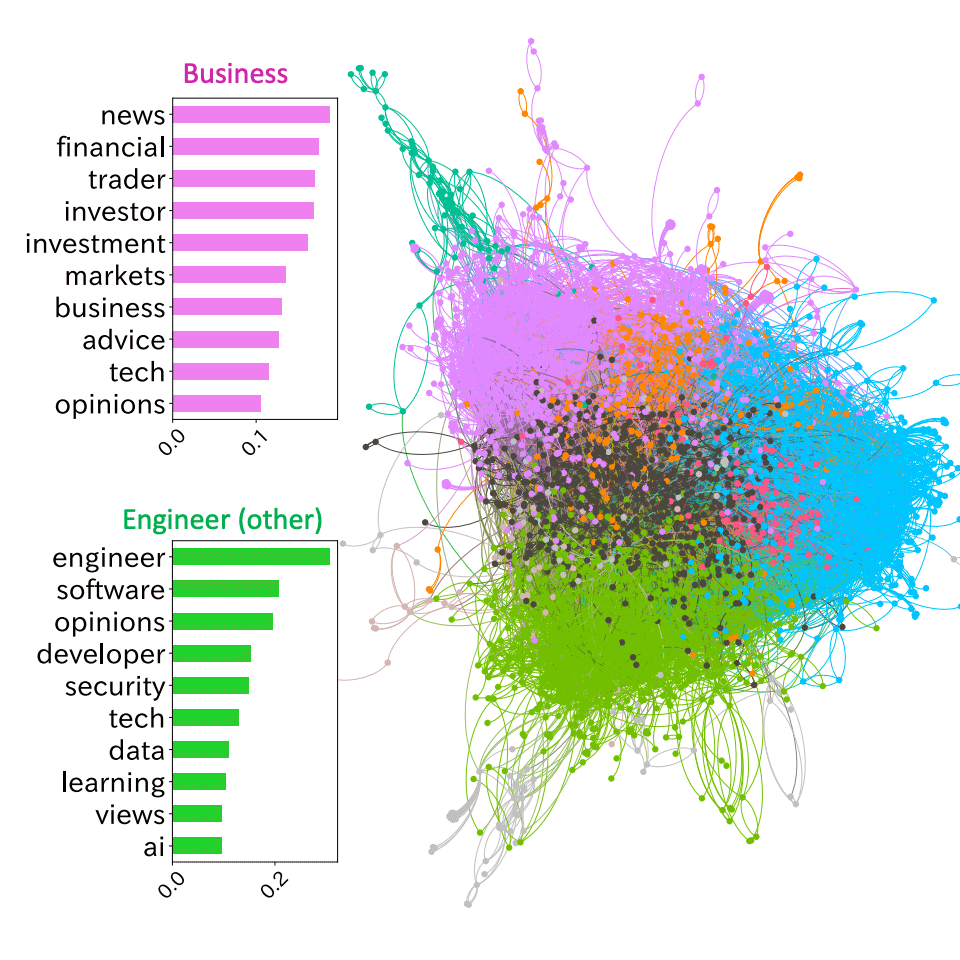
Social media is not only a place for people to communicate on a daily matter but also a virtual venue to transmit and exchange various ideas. Such ideas are known as the raw voices of potential consumers, which come from a wide range of people who may not participate in consumer surveys, and therefore their opinions may contain high value to companies. However, how users share their ideas on social media is still underexplored. This study investigates a spontaneous ideation contest about a generic term for new Big Tech companies, which occurred when Facebook changed its name to Meta. We constructed a comprehensive dataset of tweets containing candidates and examined how they were suggested, spread, and exchanged by social media users. Our findings indicate that different ideas are better on different metrics. The ranking of ideas was not decided immediately after the idea contest started. The first people to post ideas have smaller followers than those who post secondarily or who only share the idea. We also confirmed that replies accumulate unique ideas, but most of them are added in the first depth in reply trees. This study would promote the use of social media as a part of open innovation and co-creation processes in the industry.
Kunihiro Miyazaki, Takayuki Uchiba, Haewoon Kwak, Jisun An
political science network science
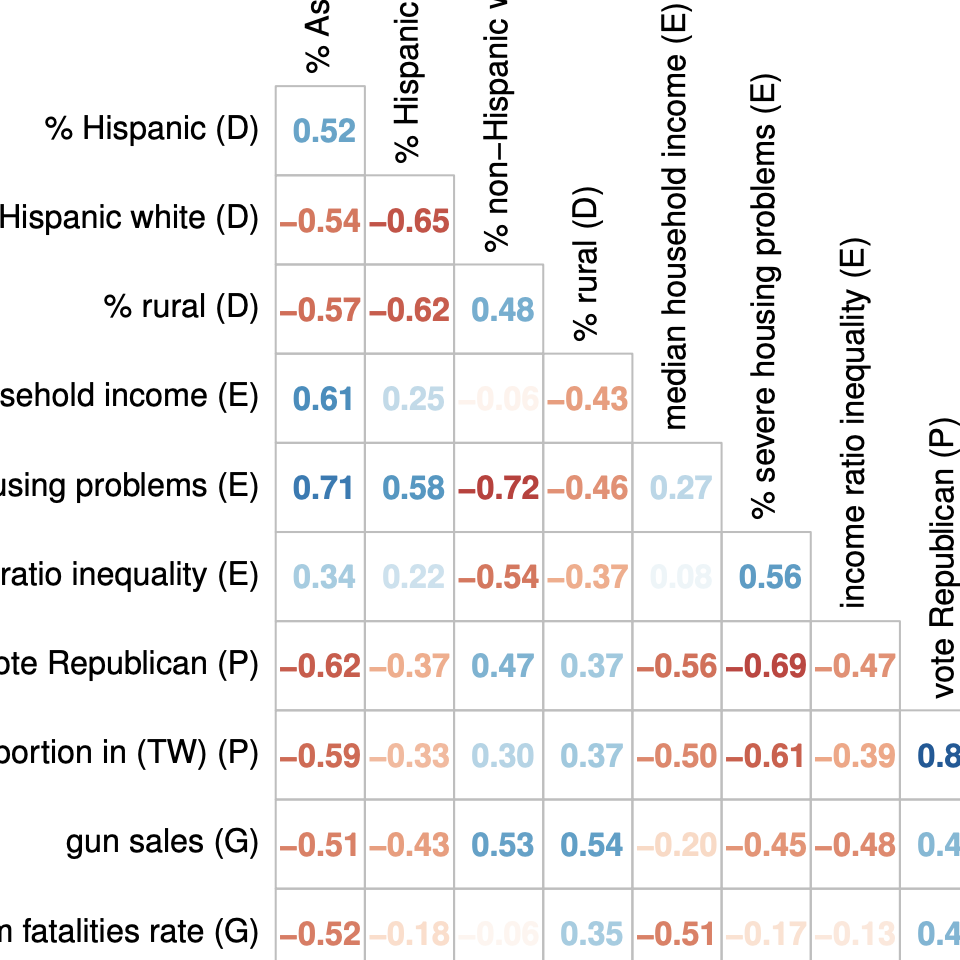
The United States have some of the highest rates of gun violence among developed countries. Yet, there is a disagreement about the extent to which firearms should be regulated. In this study, we employ social media signals to examine the predictors of offline political activism, at both population and individual level. We show that it is possible to classify the stance of users on the gun issue, especially accurately when network information is available. Alongside socioeconomic variables, network information such as the relative size of the two sides of the debate is also predictive of state-level gun policy. On individual level, we build a statistical model using network, content, and psycho-linguistic features that predicts real-life political action, and explore the most predictive linguistic features. Thus, we argue that, alongside demographics and socioeconomic indicators, social media provides useful signals in the holistic modeling of political engagement around the gun debate.
Yelena Mejova, Jisun An, Gianmarco De Francisci Morales, Haewoon Kwak
ACM Transactions on Social Computing, 2022
computational journalism network science bias/fairness
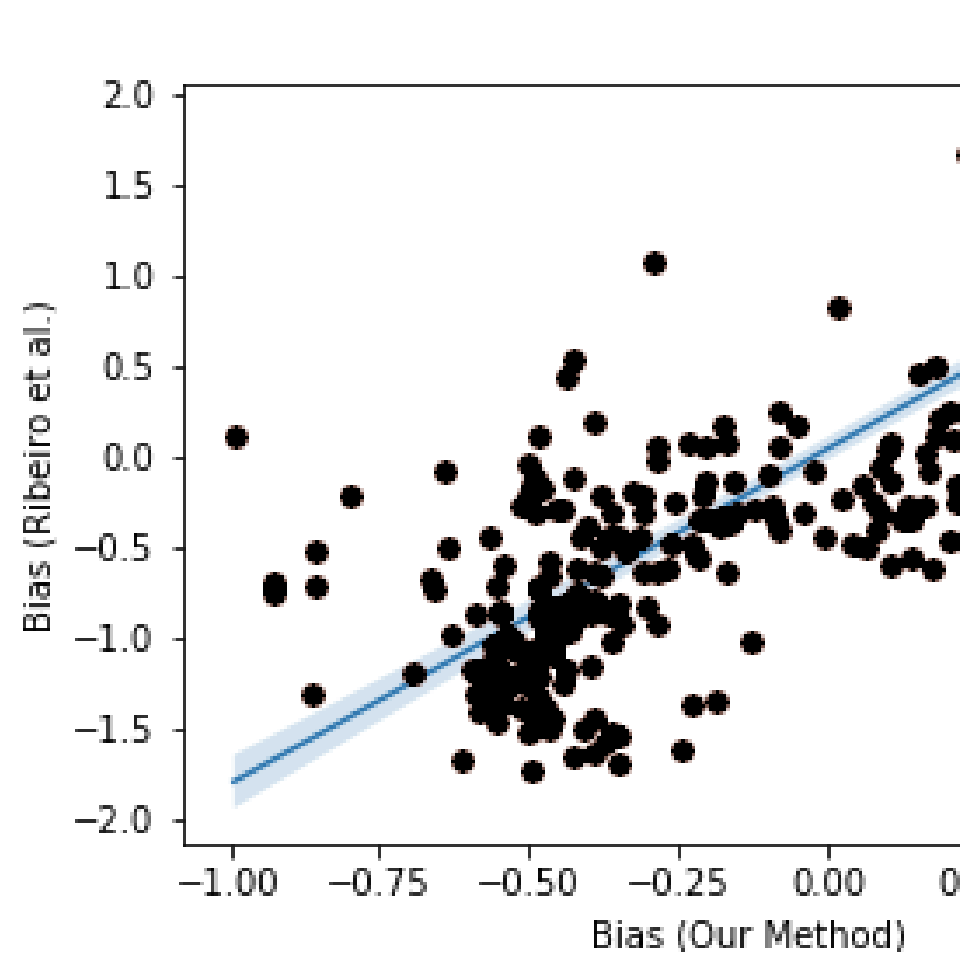
In this work, we propose a graph-based semi-supervised method to measure the political bias of pages on most countries and show the political split of the alternative media, mainstream media, and public figures pages. We validate our method using the publicly available U.S. dataset and then apply it to Brazilian pages, where we found a larger number of right-wing pages in general, except for alternative news media.
Samuel S Guimarães, Julio CS Reis, Lucas Lima, Filipe N Ribeiro, Marisa Vasconcelos, Jisun An, Haewoon Kwak, Fabrício Benevenuto
IEEE/ACM International Conference on Advances in Social Networks Analysis and Mining (ASONAM), 2020
computational journalism network science
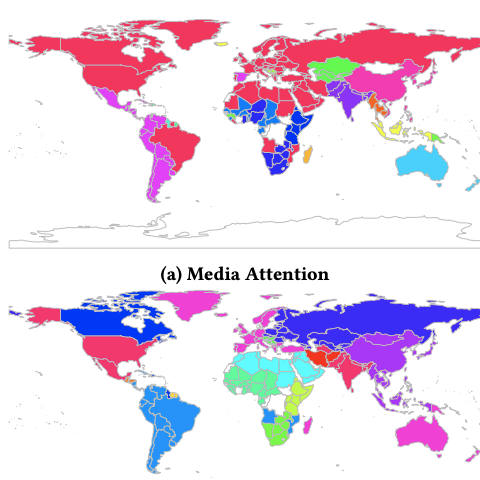
We investigate the alignment of international attention of news media organizations within 193 countries with the expressed international interests of the public within those same countries from March 7, 2016 to April 14, 2017. We collect fourteen months of longitudinal data of online news from Unfiltered News and web search volume data from Google Trends and build a multiplex network of media attention and public attention in order to study its structural and dynamic properties.
Haewoon Kwak, Jisun An, Joni Salminen, Soon-Gyo Jung, Bernard J. Jansen.
Proceedings of the 2018 World Wide Web Conference (WWW), 2018
computational journalism network science
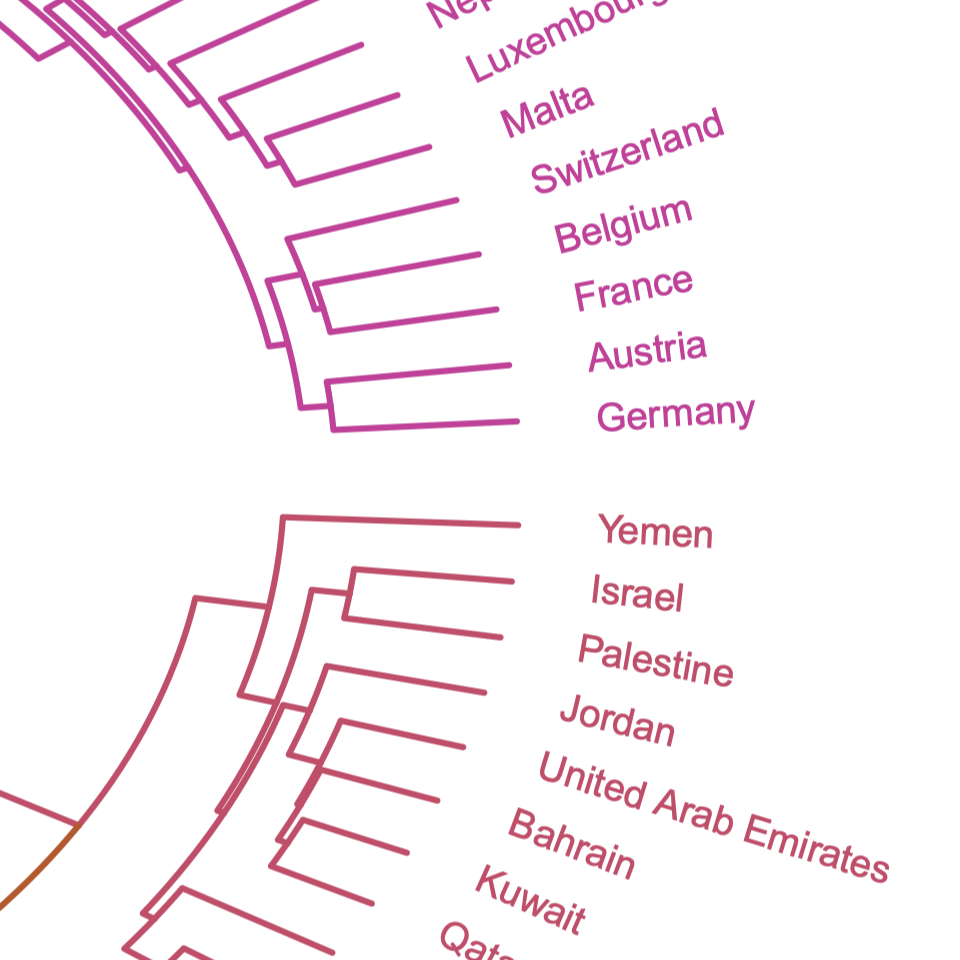
The objective of this study is to assess the longitudinal trends of media similarity and dissimilarity on the international scale. As news value has well-established political, cultural, and economic consequences, the degree to which media coverage and content is converging across countries has implications for international relations. To study this convergence, we use the daily data of the 100 topics that were overreported in each country, compared to other countries, from March 7 to October 9, 2016.
Jisun An, Hassan Aldarbesti, Haewoon Kwak
Proceedings of Social Informatics (SocInfo), 2017 (short)
computational journalism network science
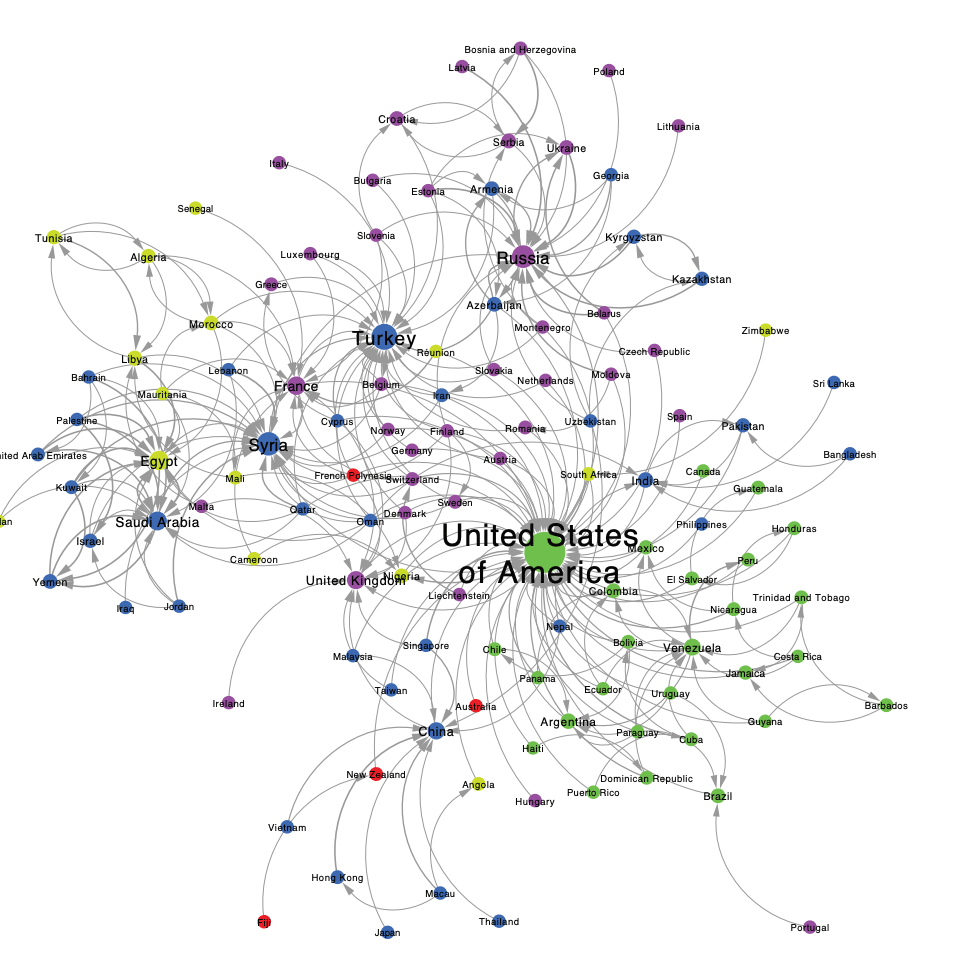
We built a multiplex media attention and disregard network (MADN) among 129 countries over 212 days. By characterizing the MADN from multiple levels, we found that it is formed primarily by skewed, hierarchical, and asymmetric relationships. Also, we found strong evidence that our news world is becoming a “global village.” However, at the same time, unique attention blocks of the Middle East and North Africa (MENA) region, as well as Russia and its neighbors, still exist.
Haewoon Kwak, Jisun An
network science
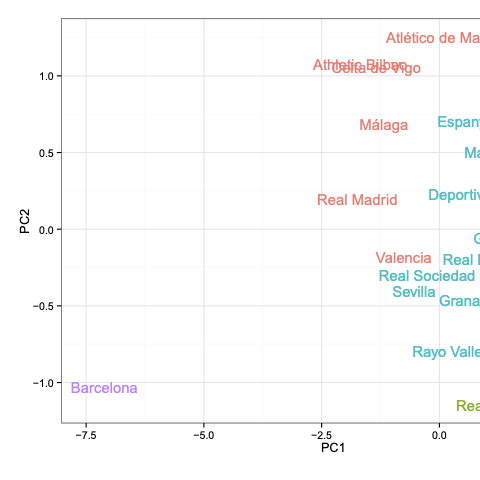
We introduce the the concept of “flow motifs” to characterize the statistically significant pass sequence patterns. It extends the idea of the network motifs, highly significant subgraphs that usually consists of three or four nodes. The analysis of the motifs in the pass networks allows us to compare and differentiate the styles of different teams. Although most teams tend to apply homogenous style, surprisingly, a unique strategy of soccer exists. Specifically, FC Barcelona’s famous tiki-taka does not consist of uncountable random passes but rather has a precise, finely constructed structure.
Laszlo Gyarmati, Haewoon Kwak, Pablo Rodriguez
KDD Workshop on Large-Scale Sports Analytics, 2014
Press coverage-BBC, MIT Technology Review, The Times, The Economist, Slate, Pacific Standard, and so on.
network science HCI
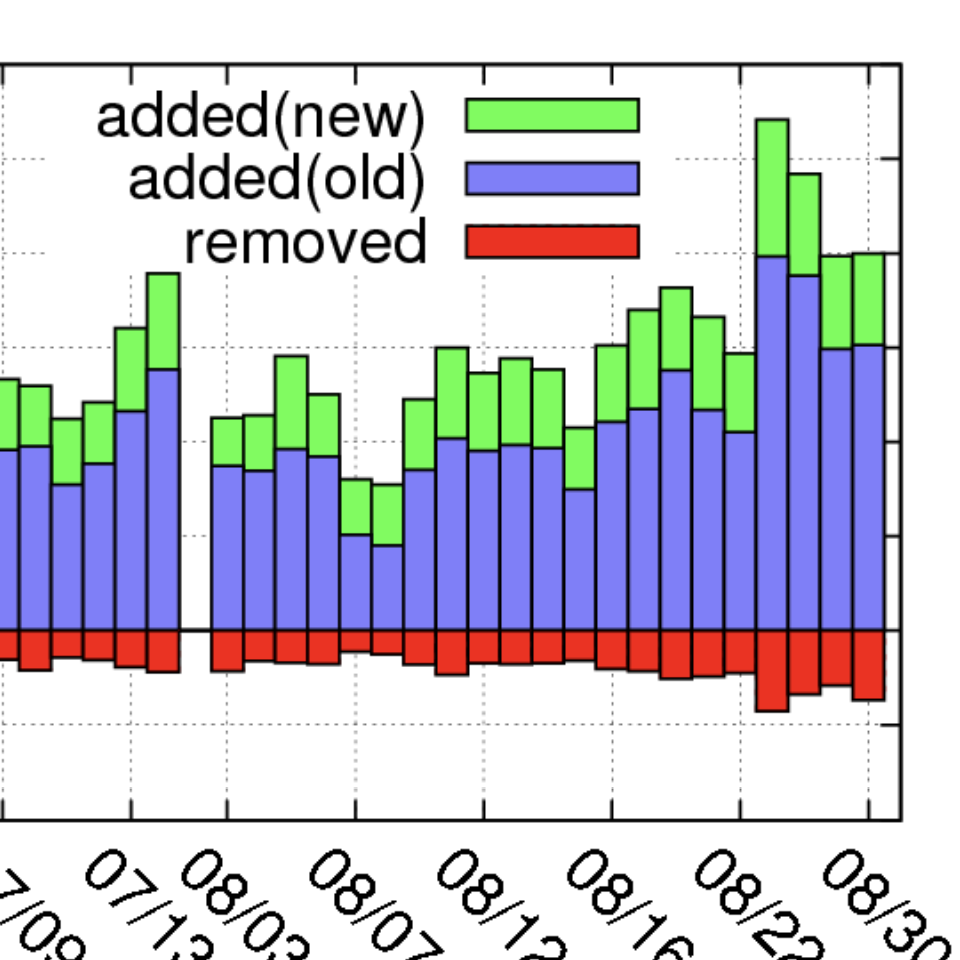
We analyze the dynamics of the behavior known as ‘unfollow’ in Twitter. We collected daily snapshots of the online relationships of 1.2 million Korean-speaking users for 51 days as well as all of their tweets. We found that Twitter users frequently unfollow. We then discover the major factors, including the reciprocity of the relationships, the duration of a relationship, the followees’ informativeness, and the overlap of the relationships, which affect the decision to unfollow. We conduct interview with 22 Korean respondents to supplement the quantitative results.
Haewoon Kwak, Hyunwoo Chun, Sue Moon
Proceedings of the SIGCHI Conference on Human Factors in Computing Systems (CHI), 2011.
Press coverage - Kyunghyang Shinmun
computational journalism network science
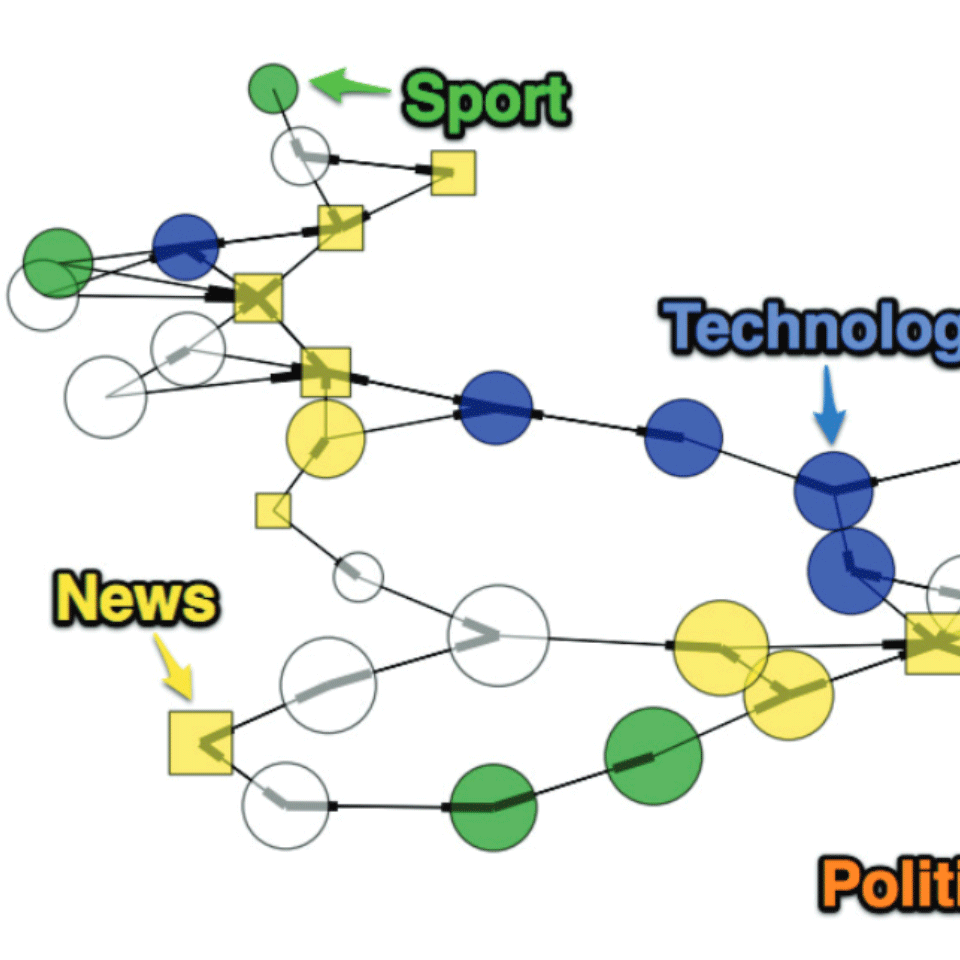
We present a preliminary but groundbreaking study of the media landscape of Twitter. We use public data on whom follows who to uncover common behaviour in media consumption, the relationship between various classes of media, and the diversity of media content which social links may bring. Our analysis shows that there is a non-negligible amount of indirect media exposure, either through friends who follow particular media sources, or via retweeted messages. We show that the indirect media exposure expands the political diversity of news to which users are exposed to a surprising extent, increasing the range by between 60-98%. These results are valuable because they have not been readily available to traditional media, and they can help predict how we will read news, and how publishers will interact with us in the future.
Jisun An, Meeyoung Cha, Krishna Gummadi, Jon Crowcroft
Proceedings of the 5th International AAAI Conference on Weblogs and Social Media (ICWSM), 2011.
network science
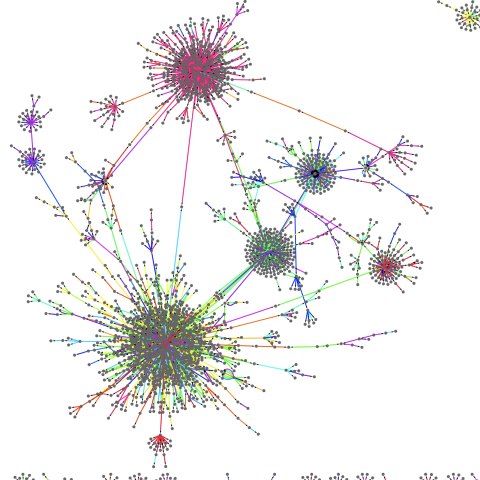
We have crawled the entire Twitter site and obtained 41.7 million user profiles, 1.47 billion social relations, 4,262 trending topics, and 106 million tweets. In its follower-following topology analysis we have found a non-power-law follower distribution, a short effective diameter, and low reciprocity, which all mark a deviation from known characteristics of human social networks [28]. In order to identify influentials on Twitter, we have ranked users by the number of followers and by PageRank and found two rankings to be similar. Ranking by retweets differs from the previous two rankings, indicating a gap in influence inferred from the number of followers and that from the popularity of one’s tweets.
Haewoon Kwak, Changhyun Lee, Hosung Park, Sue Moon
Proceedings of the 19th international conference on World wide web (WWW), 2010.
Press coverage - Mashable Op-Ed, ReadWrite, The Guardian, PC News, Chosun Ilbo, DongA Ilbo
Full List
MAANG? MANGA? Characterizing Spontaneous Ideation Contest on Social Media
Kunihiro Miyazaki, Takayuki Uchiba, Haewoon Kwak, Jisun An
IEEE BigData, 2022 (short)
Modeling Political Activism around Gun Debate via Social Media
Yelena Mejova, Jisun An, Gianmarco De Francisci Morales, Haewoon Kwak
ACM Transactions on Social Computing, 2022
5+ papers citing this work (Google scholar)
Identifying and Characterizing Alternative News Media on Facebook
Samuel S Guimarães, Julio CS Reis, Lucas Lima, Filipe N Ribeiro, Marisa Vasconcelos, Jisun An, Haewoon Kwak, Fabrício Benevenuto
IEEE/ACM International Conference on Advances in Social Networks Analysis and Mining (ASONAM), 2020
What We Read, What We Search: Media Attention and Public Attention among 193 Countries
Haewoon Kwak, Jisun An, Joni Salminen, Soon-Gyo Jung, Bernard J. Jansen.
Proceedings of the 2018 World Wide Web Conference (WWW), 2018
20+ papers citing this work (Google scholar)
Convergence of Media Attention Across 129 Countries
Jisun An, Hassan Aldarbesti, Haewoon Kwak
Proceedings of Social Informatics (SocInfo), 2017 (short)
Multiplex Media Attention and Disregard Network among 129 Countries
Haewoon Kwak, Jisun An
Proceedings of the IEEE/ACM International Conference on Advances in Social Networks Analysis and Mining (ASONAM), 2017
Searching for a Unique Style in Soccer
Laszlo Gyarmati, Haewoon Kwak, Pablo Rodriguez
KDD Workshop on Large-Scale Sports Analytics, 2014
Press coverage-BBC, MIT Technology Review, The Times, The Economist, Slate, Pacific Standard, and so on.
110+ papers citing this work (Google scholar)
Structures of Broken Ties: Exploring Unfollow Behavior on Twitter
Bo Xu, Yun Huang, Haewoon Kwak, Noshir S. Contractor
Proceedings of the 16th ACM Conference on Computer Supported Cooperative Work and Social Computing (CSCW), 2013
70+ papers citing this work (Google scholar)
More of a Receiver than a Giver: Why Do People Unfollow in Twitter?
Haewoon Kwak, Sue Moon, Wonjae Lee (4 page poster)
Proceedings of the 6th International AAAI Conference on Weblogs and Social Media (ICWSM), 2012
50+ papers citing this work (Google scholar)
Consistent Community Identification in Complex Networks
Haewoon Kwak, Sue Moon, Young-Ho Eom, Yoonchan Choi, Hawoong Jeong
Journal of Korean Physical Society, Vol. 59, No. 5, November 2011.
Fragile Online Relationship: a First Look at Unfollow Dynamics in Twitter
Haewoon Kwak, Hyunwoo Chun, Sue Moon
Proceedings of the SIGCHI Conference on Human Factors in Computing Systems (CHI), 2011.
Press coverage - Kyunghyang Shinmun
150+ papers citing this work (Google scholar)
Media Landscape in Twitter: A World of New Conventions and Political Diversity
Jisun An, Meeyoung Cha, Krishna Gummadi, Jon Crowcroft
Proceedings of the 5th International AAAI Conference on Weblogs and Social Media (ICWSM), 2011.
200+ papers citing this work (Google scholar)
What is Twitter, a Social Network or a News Media?
Haewoon Kwak, Changhyun Lee, Hosung Park, Sue Moon
Proceedings of the 19th international conference on World wide web (WWW), 2010.
Press coverage - Mashable Op-Ed, ReadWrite, The Guardian, PC News, Chosun Ilbo, DongA Ilbo
10k+ papers citing this work (Google scholar)
Finding Influentials based on the Temporal Order of Information Adoption in Twitter
Changhyun Lee, Haewoon Kwak, Hosung Park, Sue Moon (poster)
Proceedings of the 19th international conference on World wide web (WWW), 2010.
200+ papers citing this work (Google scholar)
Understanding Topological Mesoscale Features in Community Mining
Sue Moon, Jinyoung You, Haewoon Kwak, Daniel Kim, and Hawoong Jeong (invited paper)
Proceedings of the Second International Conference on COMmunication Systems and NETworks (COMSNETS), 2010.
Mining Communities in Networks: a Solution for Consistency and Its Evaluation
Haewoon Kwak, Yoonchan Choi, Young-Ho Eom, Hawoong Jeong, Sue Moon
Proceedings of the 9th ACM SIGCOMM conference on Internet measurement (IMC), 2009
90+ papers citing this work (Google scholar)
Connecting Users with Similar Interests Across Multiple Web Services
Haewoon Kwak, Hwa-Yong Shin, Jong-Il Yoon, Sue Moon (poster)
Proceedings of the 3rd International AAAI Conference on Weblogs and Social Media (ICWSM), 2009
Comparison of Online Social Relations in Volume vs Interaction: A Case Study of Cyworld
Hyunwoo Chun, Haewoon Kwak, Young-Ho Eom, Yong-Yeol Ahn, Sue Moon, and Hawoong Jeong
Proceedings of the 8th ACM SIGCOMM conference on Internet measurement (IMC), 2008
250+ papers citing this work (Google scholar)
Analysis of topological characteristics of huge online social networking services
Yong-Yeol Ahn, Seungyeop Han, Haewoon Kwak, Sue Moon, Hawoong Jeong
Proceedings of the 16th international conference on World Wide Web (WWW), 2007